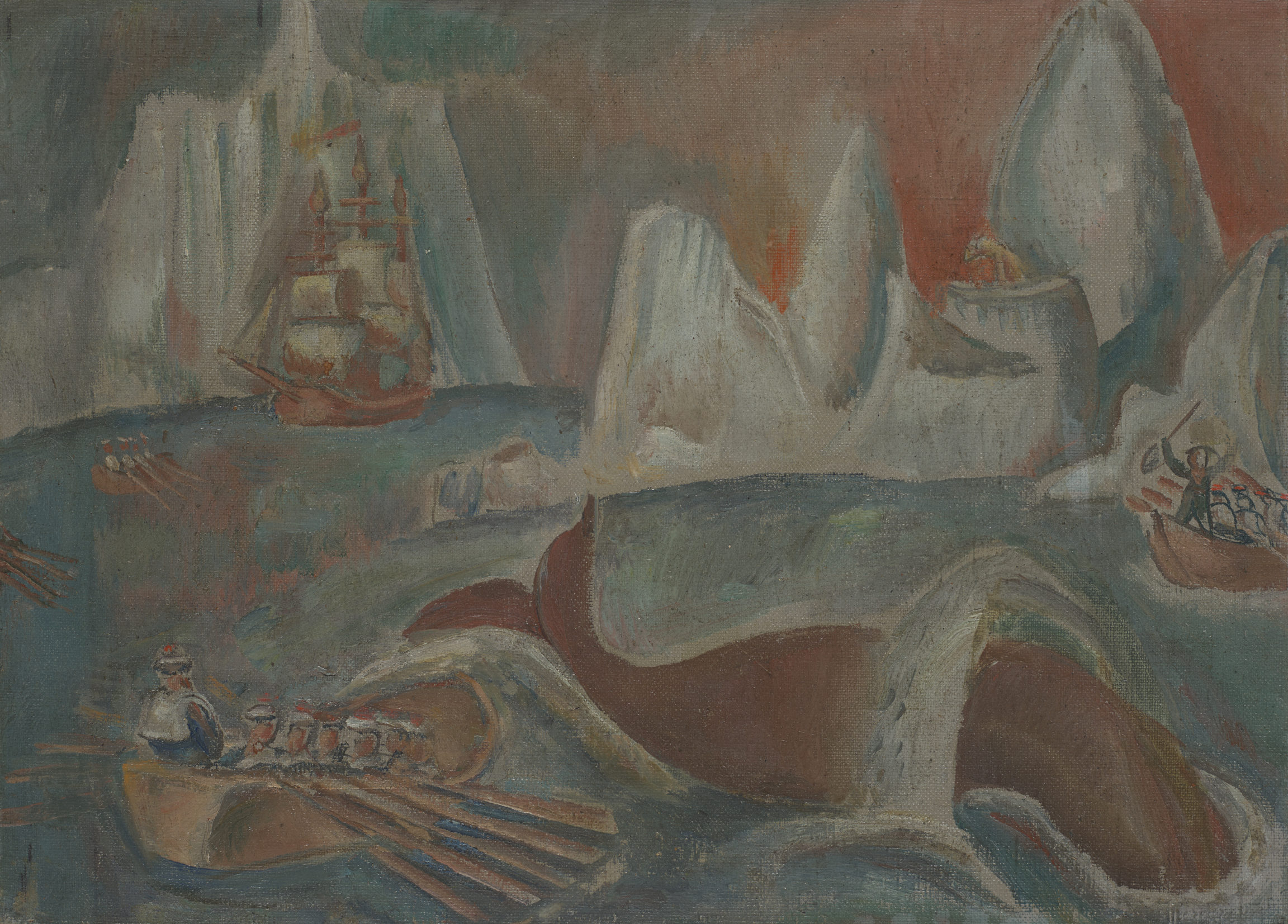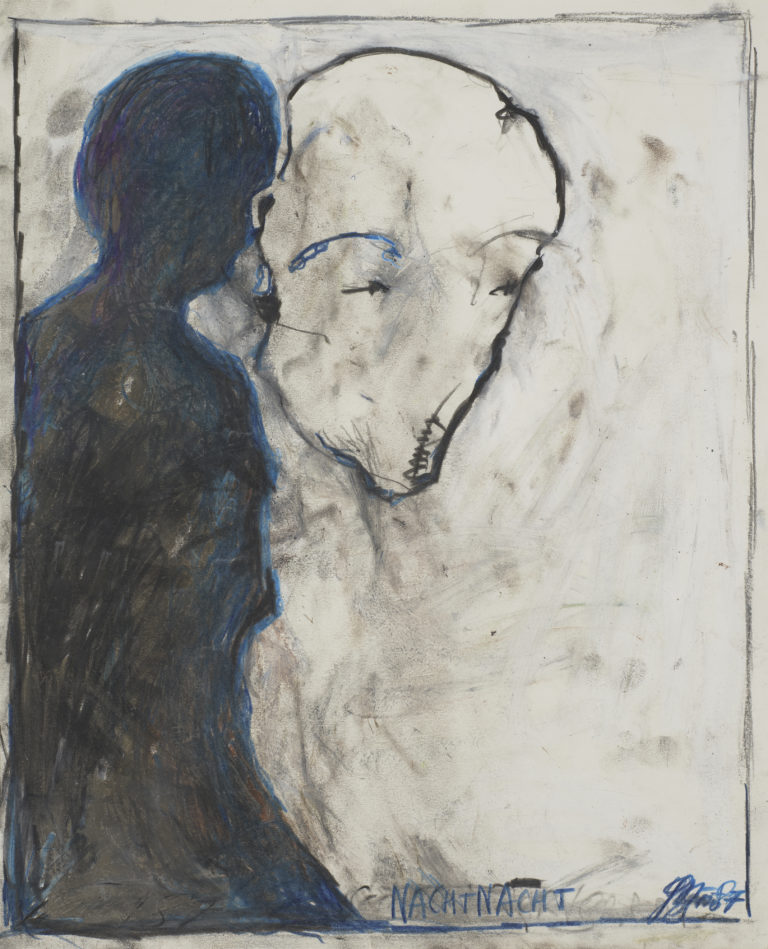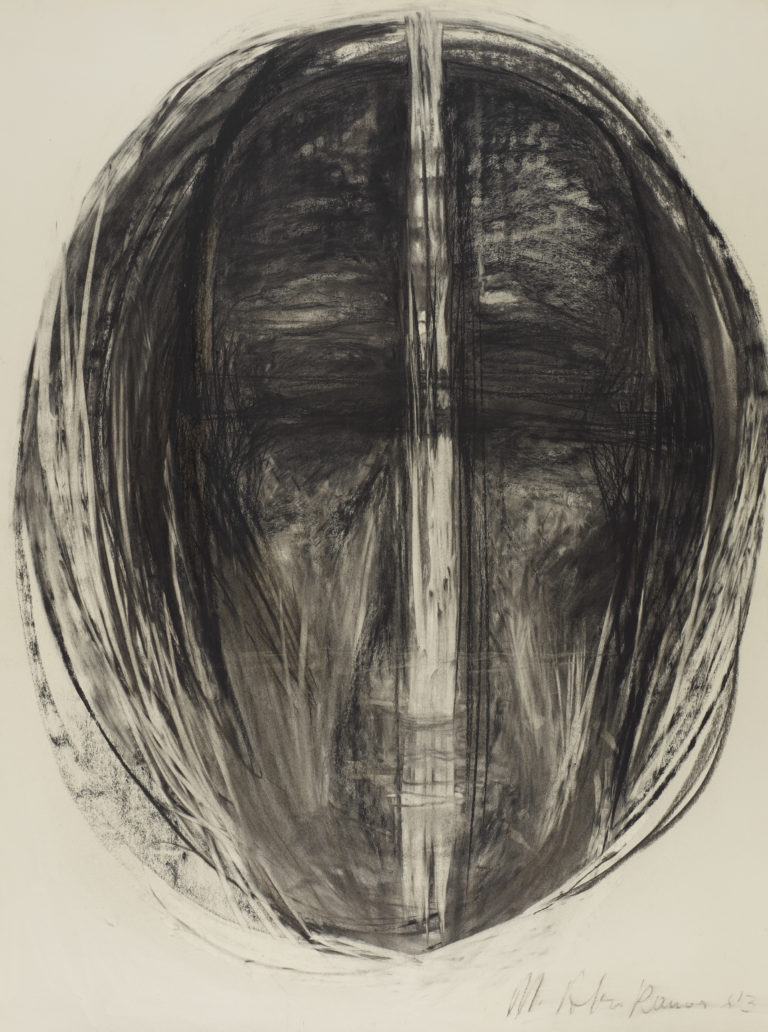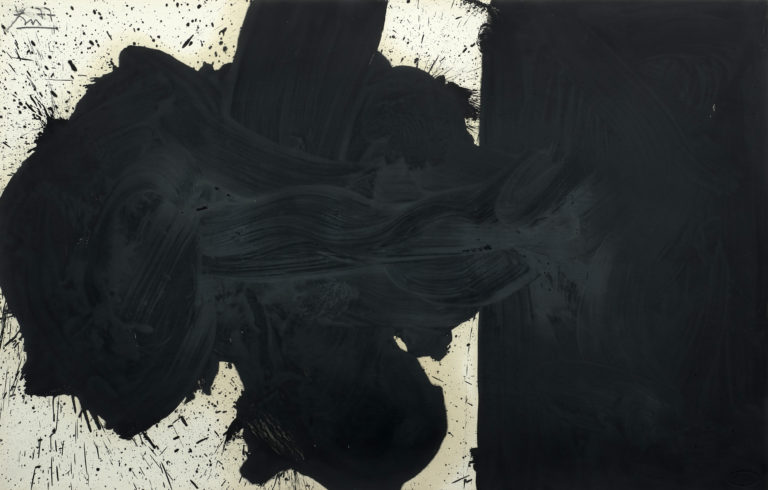Bibliography
Jörg Zutter (ed.) et alii, René Auberjonois, exh. cat. Lausanne, Musée cantonal des Beaux-Arts, Geneva, Skira, 1994.
Hugo Wagner, René Auberjonois. L’œuvre peint – Das gemalte Werk. Catalogue des huiles, pastels et peintures sous verre, Zurich, Swiss Institute for Art Research, Denges-Lausanne, Editions du Verseau, 1987 : n. 215.




In 1916, as the First World War was raging, Pablo Picasso designed a stage curtain for Parade. The show with texts by Jean Cocteau and music by Erik Satie, premiered in Paris in 1917 by the Ballets russes, is often considered one of the earliest examples of collaboration by avant-garde artists.
The same year, René Auberjonois was taking his first steps in theatre design, producing costumes and sets for Fernand Chavannes’s play Guillaume le fou, premiered at the Comédie theatre in Geneva in collaboration with Jacques Copeau. Soon after, probably in 1917, he met Igor Stravinsky, who had sought refuge in Morges. Auberjonois, Stravinsky and Chavannes became friends, working together on The Soldier’s Tale, premiered in Lausanne in September 1918. The text was by the Swiss writer Charles Ferdinand Ramuz, the music by Stravinsky, the curtain, sets, and costumes by Auberjonois. Georges and Ludmilla Pitoëff danced the devil and the princess; Gabriel Rosset was the soldier, Élie Gagnebin the narrator, and Jean Villard took the devil’s speaking part. The work was supported financially by the Winterthur-based art patron Werner Reinhart.
The theatrical work, based on a Russian folk tale, recounts the deal struck by a soldier with the devil to exchange his violin for untold wealth. The whale-hunting scene Auberjonois conjured up for the stage curtain design is wholly unconnected to the narrative, acting rather as a spur for the imagination. As he wrote in 1914 on the expressive nature of fairground backdrops, “[…] the booth décor is the prologue. It promises a terrible reality in terrible terms”.
The actual curtain has been lost: all that survives are two preparatory watercolours and this precious scale model. It once belonged to Ernest Ansermet, who conducted the first performances of The Soldier’s Tale.